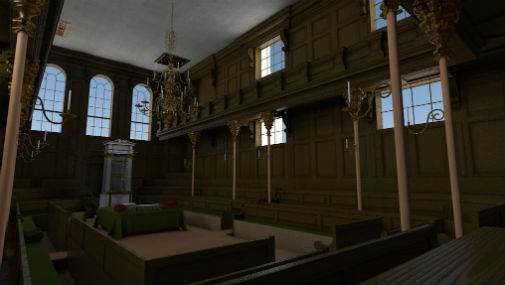Listening to the Commons with the 'women of the ventilator'
Posted on 30 May 2018

Researchers aim to highlight the deep history of women in politics
Now, researchers from the University of York, have recreated political debates, as the “women of the ventilator” would have heard them.
One hundred years on from the Representation of the People Act, which allowed some women over 30 to vote in national elections, the researchers have used acoustic technology and virtual reality to recreate House of Commons debates from c.1800-1830 which the women would have listened to from their space in the ceiling.
“The Listening to the Commons” project, which the researchers will discuss for the first time at a talk on 6 June as part of the York Festival of Ideas 2018, aims to highlight the deep history of women in politics, which stretches back much further than the suffragettes.
Yorkshire campaign
Researcher on the project, Dr Catriona Cooper from the University of York’s Department of History, said: “Women were involved in politics many years before the suffrage movement. The first petition for women to get the vote was presented in 1832, on behalf of Mary Smith, a Yorkshire woman.
“History tells us that the battle for women to reach equality in these matters had been going on for close to 100 years prior to, some, women being granted the right to vote in 1918, and the struggle is still ongoing to reach equality in various sectors and aspects of everyday life today.”
Ventilator
Women began to occupy the ventilator when, during an incident in 1778, they were asked to vacate the public gallery of the House of Commons. When one woman refused to move, women were excluded altogether.
The research builds on previous work by the same team to reconstruct the original House of Commons at St Stephen’s Chapel, which was reduced to smoking ruins in a fire which swept through the palace of Westminster in 1834.
In a collaboration between the researchers and UK Parliament, the Chapel was brought back to life in colourful 3D images by combining insights from parliamentary archives with the latest digital technology.
Voice and vote
Free tickets for “Listening to the Commons: 200 years of women in Parliament” on Wednesday 6 June at Kings Manor can be booked via http://yorkfestivalofideas.com/2018/talks/listening-to-the-commons/ . Speakers include researchers from York’s Departments of History and Electronic Engineering, and the Digital Creativity Lab.
The results of the project will also be incorporated into the “Voice and Vote: Women’s Place in Parliament Exhibition”, running in Westminster Hall from 27 June to 6 October 2018. The exhibition will allow visitors to engage with the digital outputs and recover women’s experience of politics at this time.
The York Festival of Ideas was established and is coordinated by the University of York. It has grown to become one of the largest free festivals in the UK, last year attracting over 32,000 people.
To see the full festival programme visit: http://yorkfestivalofideas.com/2018/
Explore more news

New butterfly species created 200,000 years ago by two species interbreeding
Thursday 18 April 2024

Children in the North at greater risk of entering care
Wednesday 17 April 2024

Boreal forest and tundra regions worst hit over next 500 years of climate change, study shows
Monday 8 April 2024

Researchers developing ultra-sensitive blood test with potential to revolutionise diagnosis of Alzheimer’s
Thursday 4 April 2024

Attitudes to being an adult are shifting as traditional milestones become out of reach, new study finds
Wednesday 27 March 2024
Media enquiries
About this research
The research, led by Dr John Cooper from the University's Department of History, was funded by the Arts and Humanities Research Council (AHRC).
For more information about our research visit: http://www.york.ac.uk/research/
